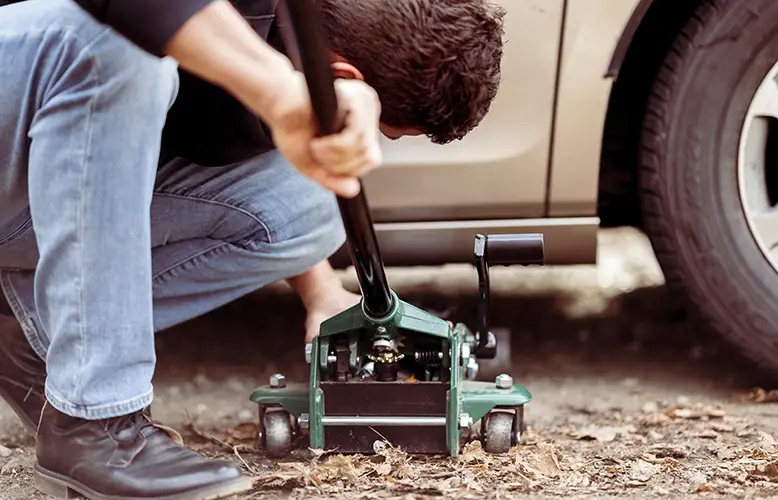In 2024, the market for suspension lift kits stood at approximately $224 million, with forecasts suggesting an ascent to $275.4 million by 2030, growing at a consistent 3.5% annually. This expansion reflects a robust interest from off-road enthusiasts and truck owners looking to upgrade their vehicle’s operational effectiveness and aesthetic qualities.
Owners of 4×4 vehicles recognize lift kits as key to enhancing off-road functionality and style. These kits, which lift the body or suspension, improve ground clearance, simplifying travel across rugged terrain. Moreover, they enable the fitting of bigger tires, enhancing vehicle control and stability in difficult conditions.
For individuals contemplating vehicle modifications, a thorough comprehension of the different lift kits, their benefits, and the installation procedure is crucial.

Lifting Kits and Their Advantages
Fitting a lift kit can markedly boost both the functionality and visual appeal of a vehicle. The kits are offered in two main categories: body lift kits, which raise the chassis from 1 to 3 inches without changing the suspension structure, and suspension lift kits, which increase the clearance between the axles and the frame to boost off-road function.
Choosing the right lift kit depends on the specific make and model of your vehicle. Because lift kits are specific to each type of vehicle, using a kit that’s custom-designed for your car ensures correct fitting, better functioning, and enhanced safety. For General Motors vehicle owners looking for a dependable enhancement, the GMC Truck Lift is a factory-engineered suspension upgrade designed for GMC and Chevrolet trucks. This lift system improves ground clearance and stability, making it easier to navigate difficult terrains. Higher clearance reduces the risk of undercarriage damage and accommodates larger tires, enhancing traction in mud, sand, and snow.
Beyond performance benefits, a lift kit changes a vehicle’s stance, giving it a bold and commanding presence both on and off-road. Many truck and SUV owners value this aggressive appearance, which complements the functional improvements provided by a well-fitted lift system.
Considerations Before Choosing a Lift Kit
Before fitting a lift kit, think about your vehicle’s primary function. If you use it daily, a smaller lift might be preferable to keep comfort and handling intact. Conversely, a larger lift suits vehicles used mainly for off-road, though it could reduce the ease of driving on regular roads.
Installing a lift kit can alter vehicle dynamics, especially during sharp turns or at higher speeds. Raising the center of gravity may affect stability, making it crucial to select a lift that optimizes both performance and safety.
Compatibility also plays a significant role. Not every lift kit is suitable for all truck or jeep models, and incorrect fitting can cause alignment or suspension complications. Make sure the lift kit you select is specifically designed for your model to prevent potential issues.
Installation Tips
Lift kits can be put in place either as a personal project or by a skilled technician. If you have mechanical abilities and the required tools, you could potentially install a simple body lift kit on your own. Nonetheless, suspension lift kits require more complex changes, including modifying steering parts and recalibrating suspension geometry.
Make sure you have all necessary tools available before beginning, such as jack stands, a torque wrench, and the needed suspension components. Follow the manufacturer’s instructions closely and check all connections carefully before driving the vehicle on the road.
Frequent installation issues involve problems with alignment, incorrect torque settings, and compatibility issues with shocks and control arms. If uncertain, employing a professional can be a time-saver and guarantees that the lift kit is installed accurately and securely.
Maintenance and Care for Lifted Vehicles
Once installed, a lift kit necessitates regular upkeep to maintain optimal vehicle performance. Vehicles with lift kits face increased stress on suspension elements, making frequent inspections critical to identify potential problems early.
It’s important to routinely check alignment since vehicles with lift kits often exhibit uneven tire wear. It is advisable to examine shocks, control arms, and bushings for any signs of deterioration or damage. Maintaining these parts in excellent condition is essential for preserving handling and comfort during the ride.
Monitoring tire pressure is crucial, particularly for larger tires. Both underinflated and overinflated tires can affect grip and accelerate wear. Proper tire maintenance not only boosts performance but also enhances vehicle safety.

Final Thoughts
Fitting a lift kit to your 4×4 improves its capability on rough tracks, raises its height from the ground, and accommodates bigger tires. This addition not only enhances the efficiency of the vehicle but also polishes its exterior look, equipping it to conquer challenging landscapes and partake in adventurous pursuits.
Before making a decision, evaluate your vehicle’s primary use, how the modification might alter its handling, and whether you need professional help for the installation. Regular upkeep ensures that your modified vehicle remains reliable and performs optimally.
If you’re considering a lift kit for your truck or SUV, invest time in researching and planning, and select a kit that aligns with your specific driving requirements. A correctly installed lift kit creates fresh possibilities for adventure and thrill.





